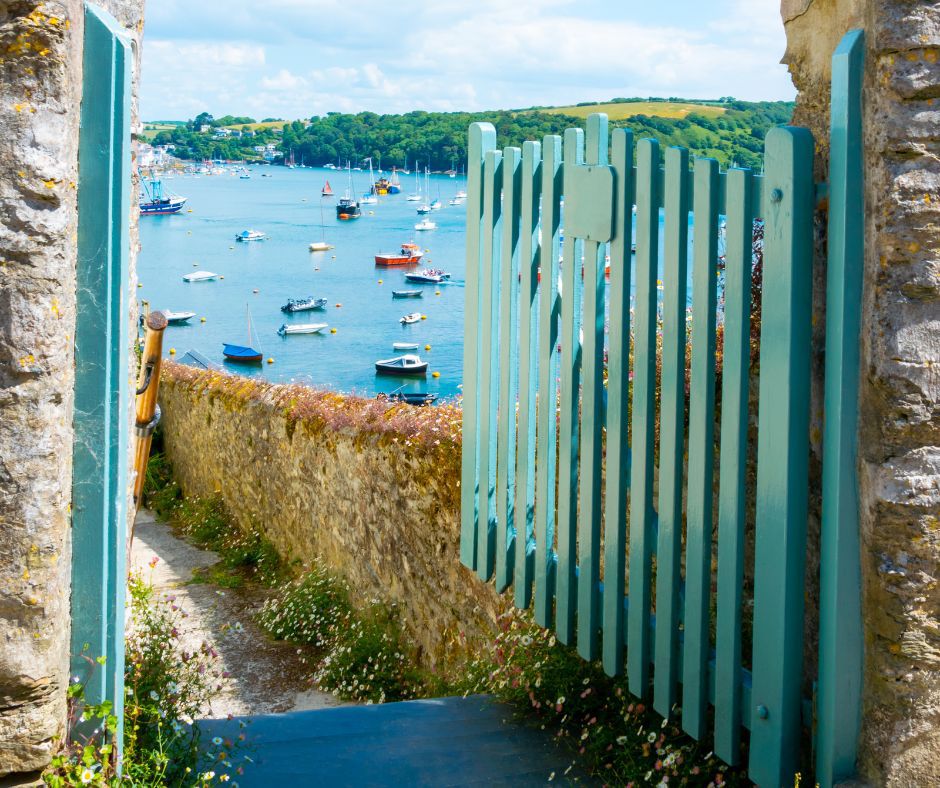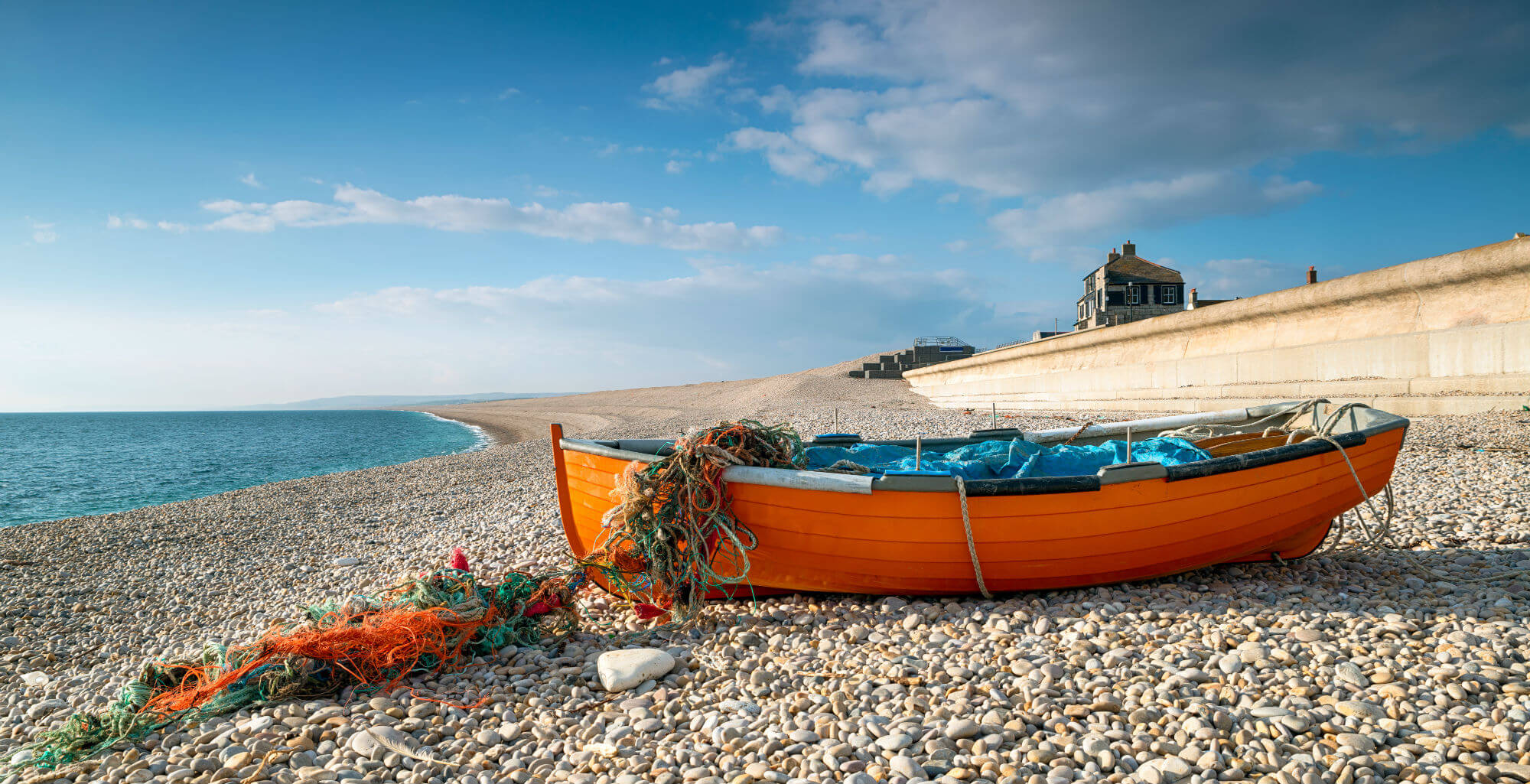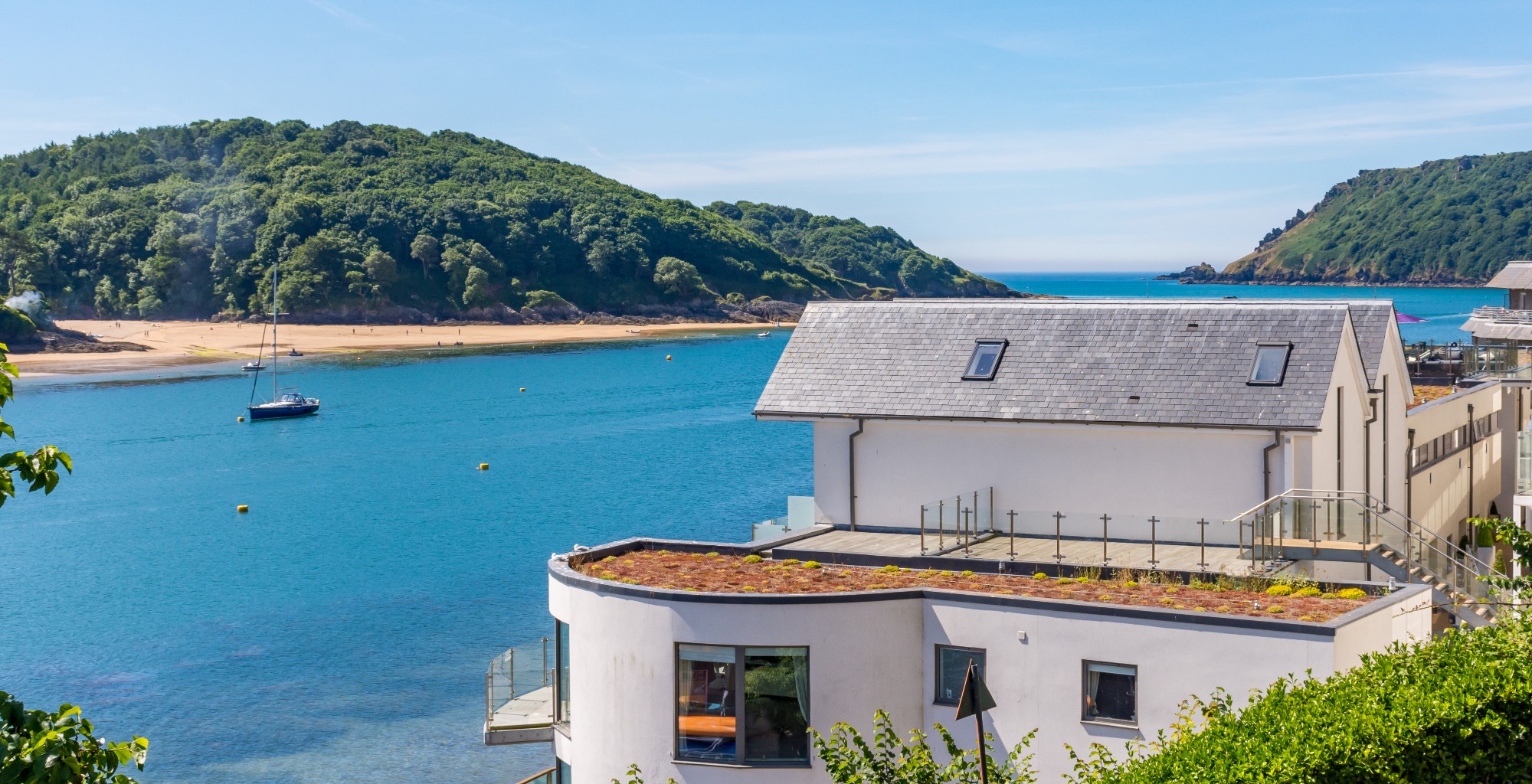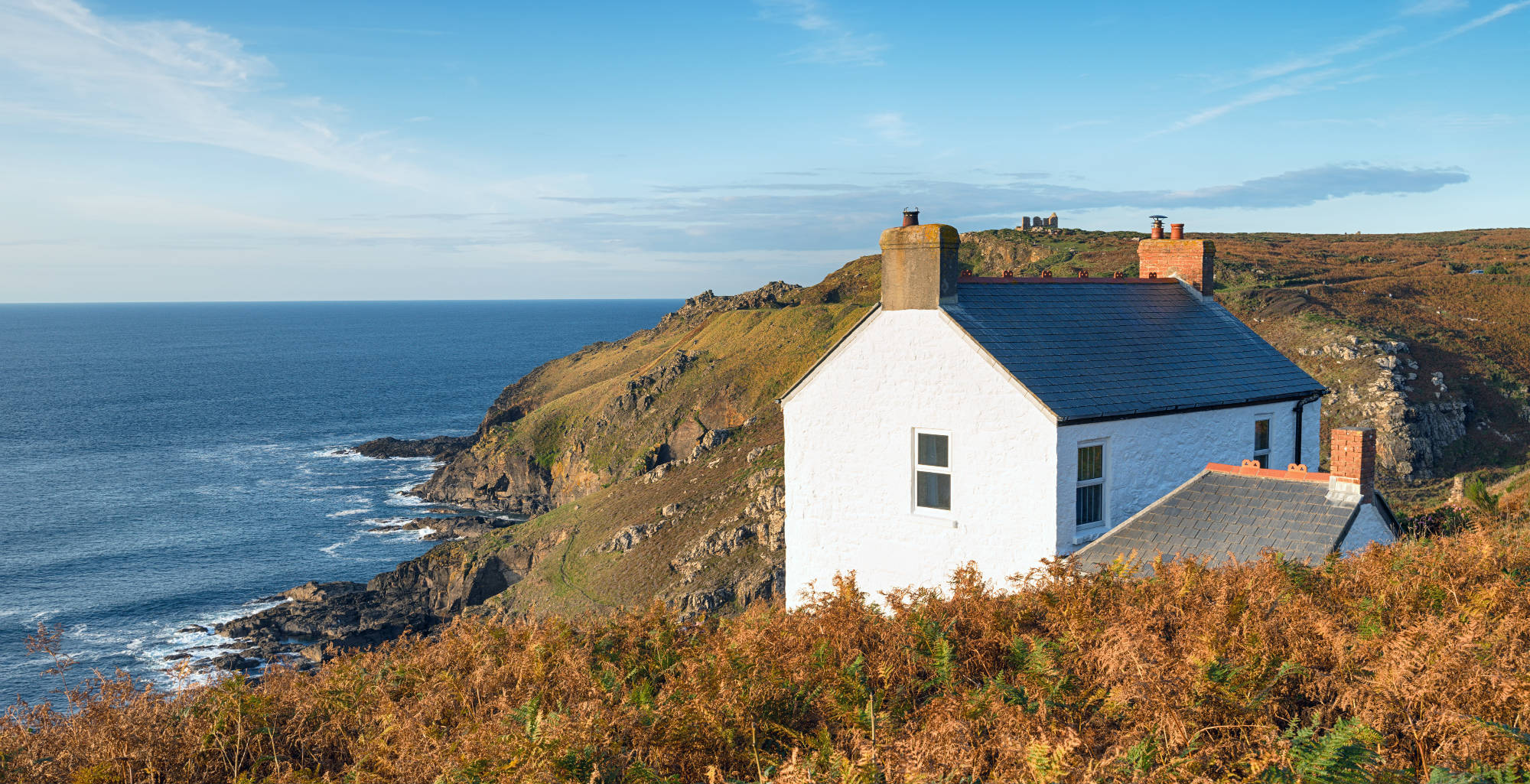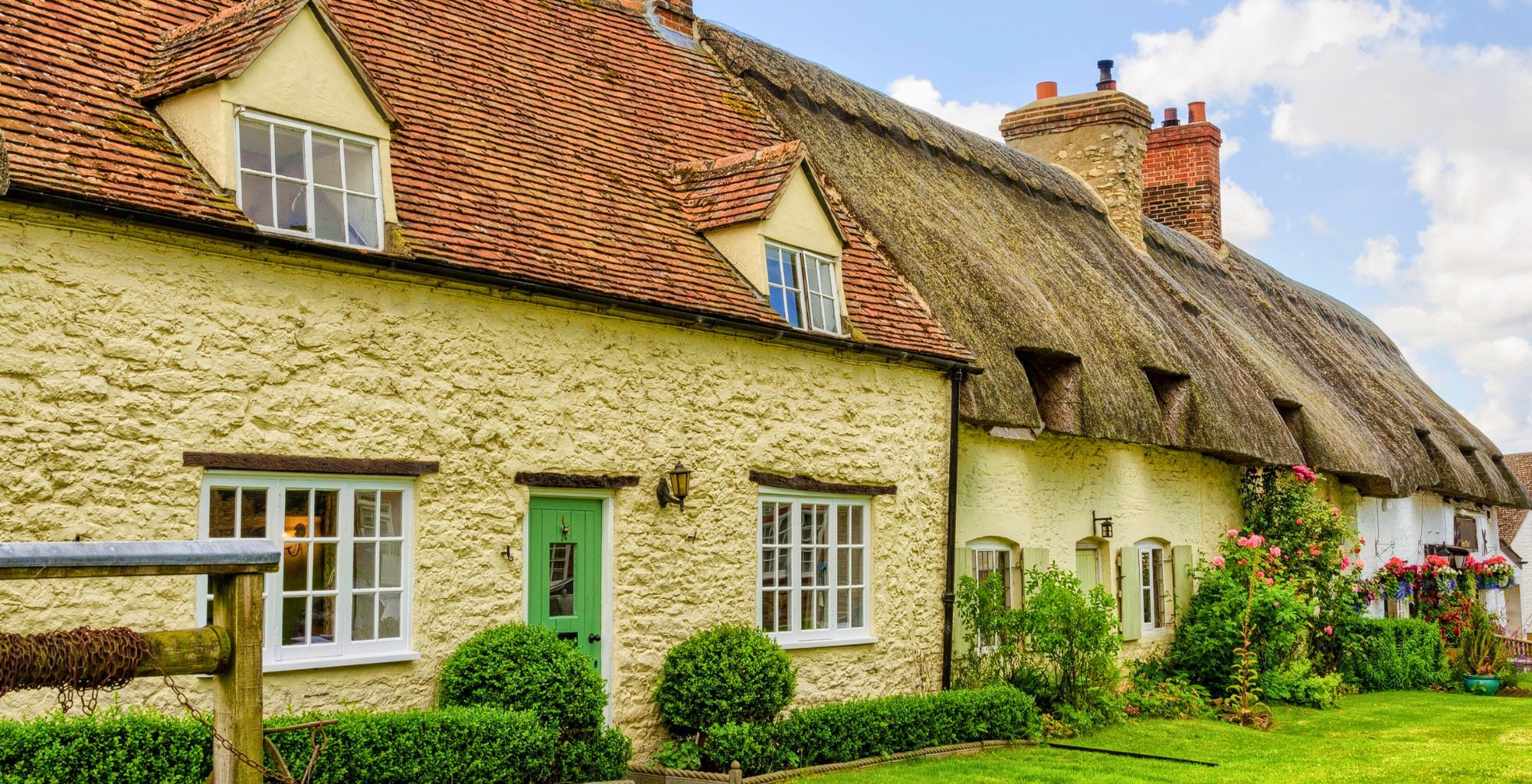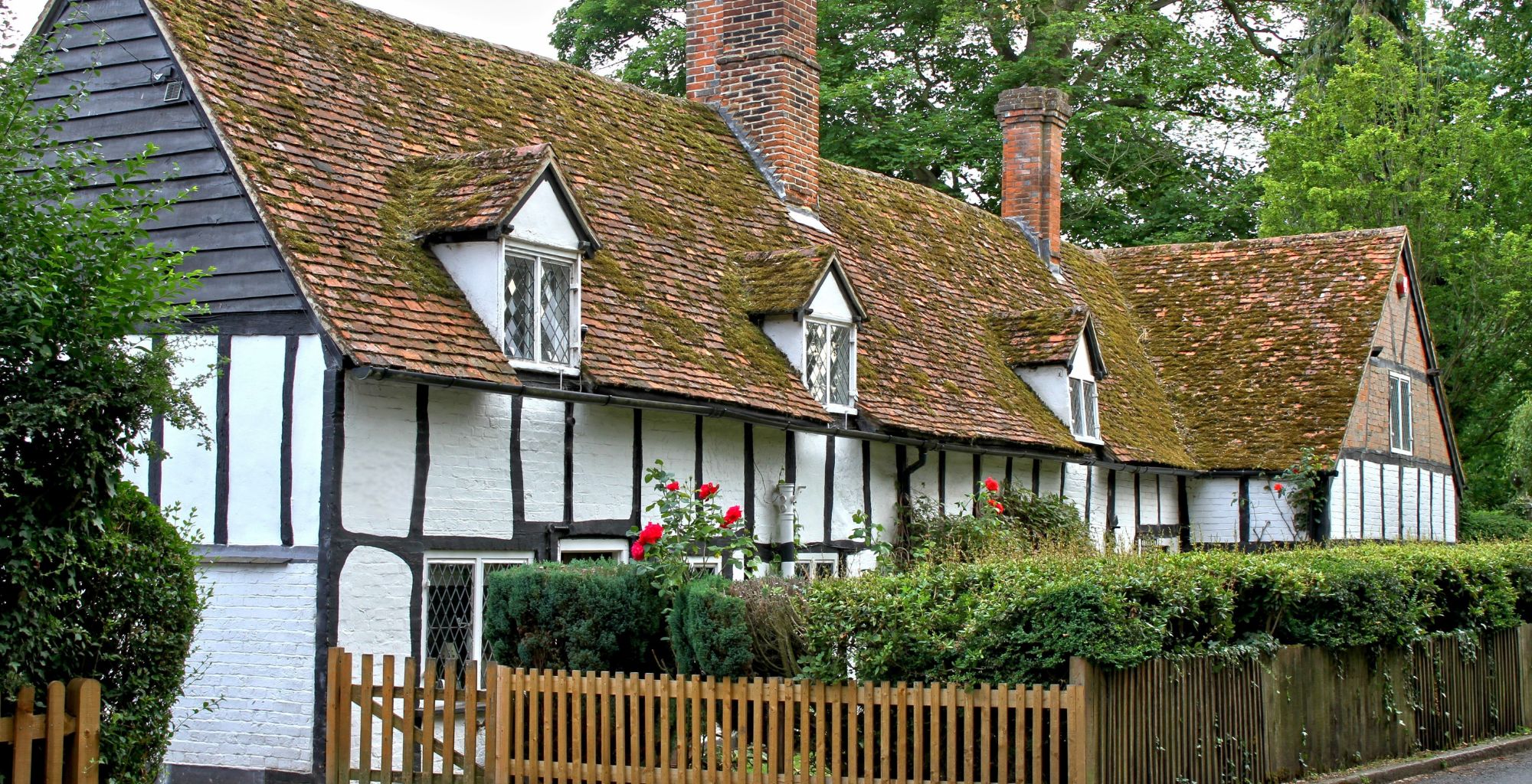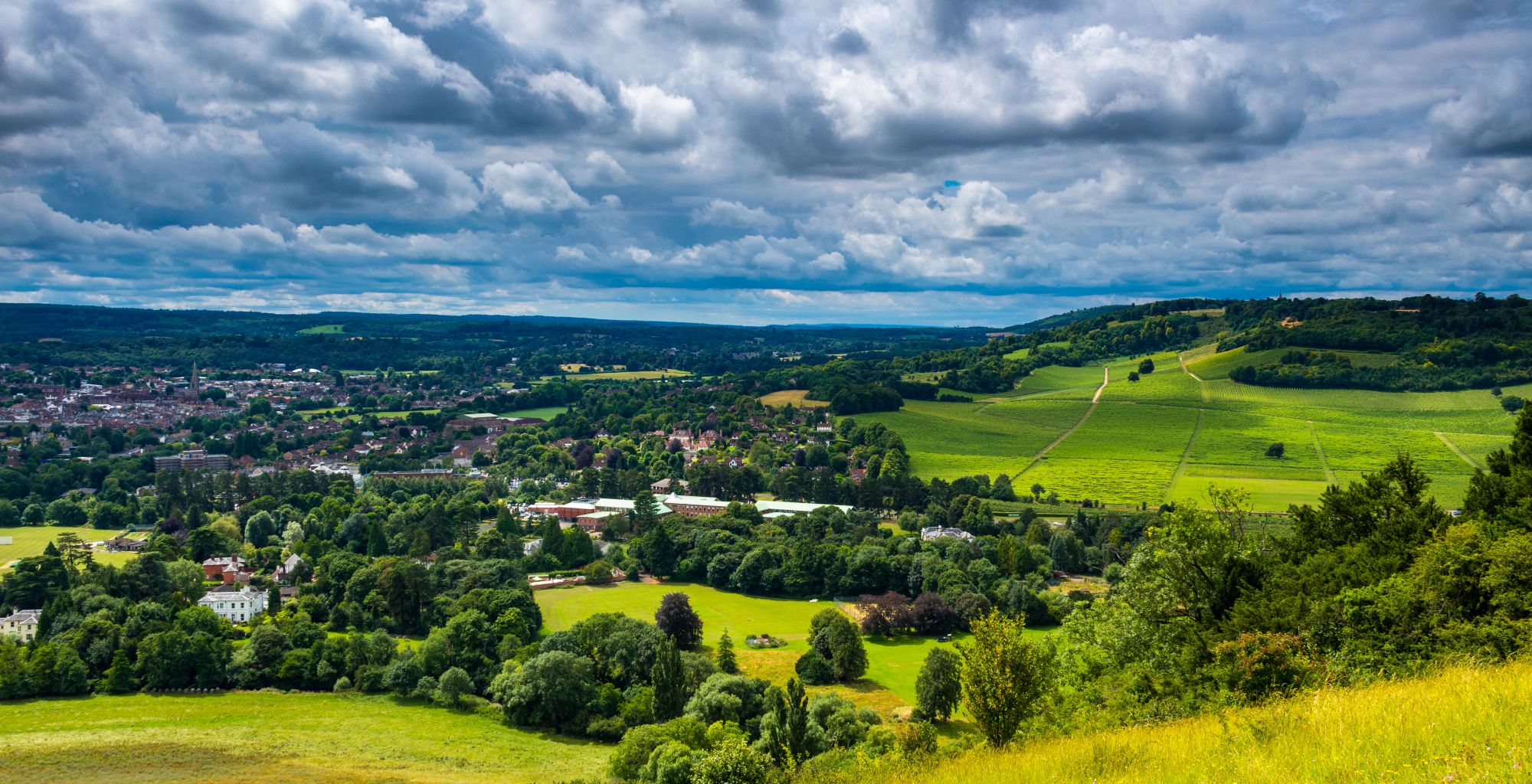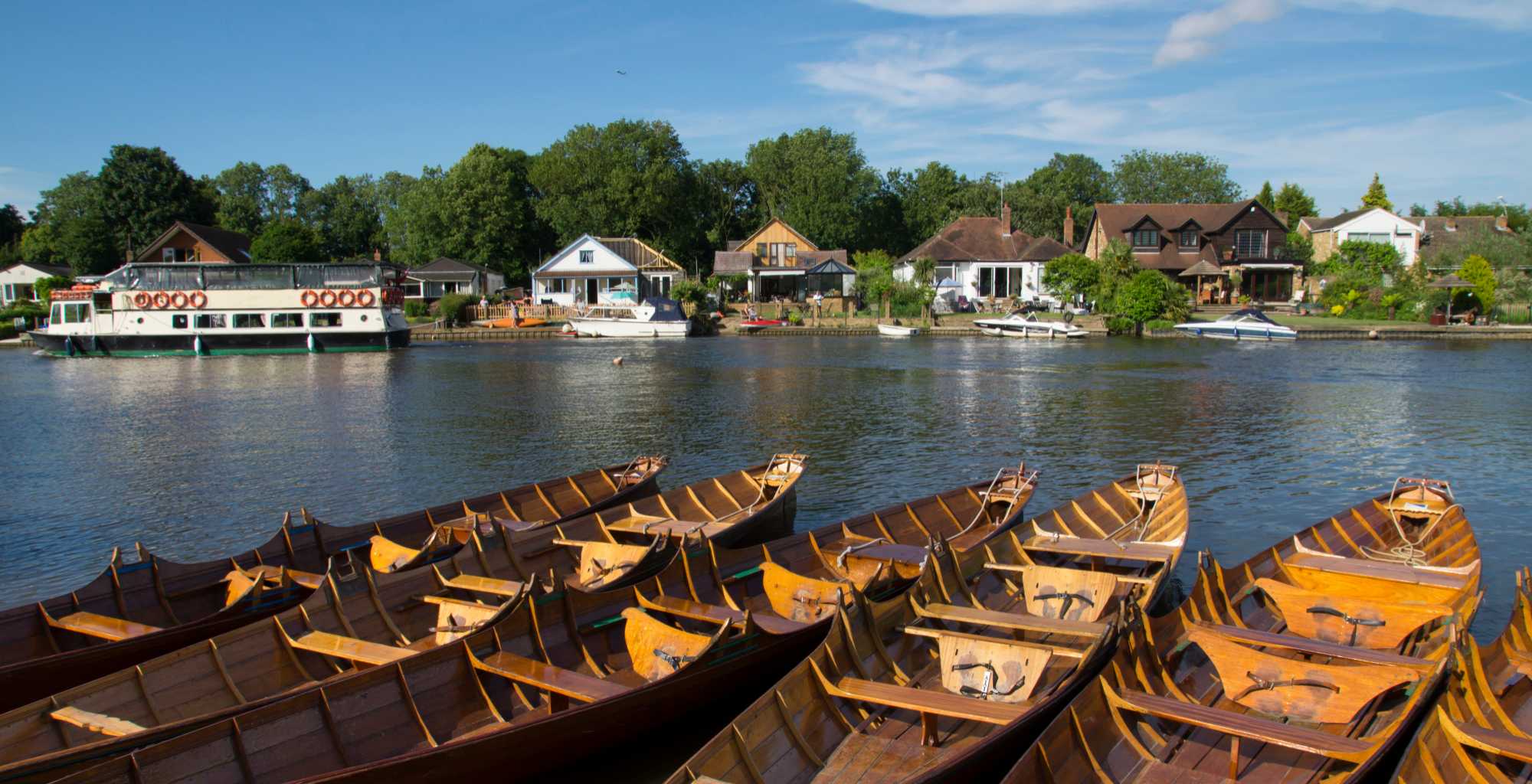Are you looking for the best places to live in Oxfordshire to focus your property search? From bustling market...
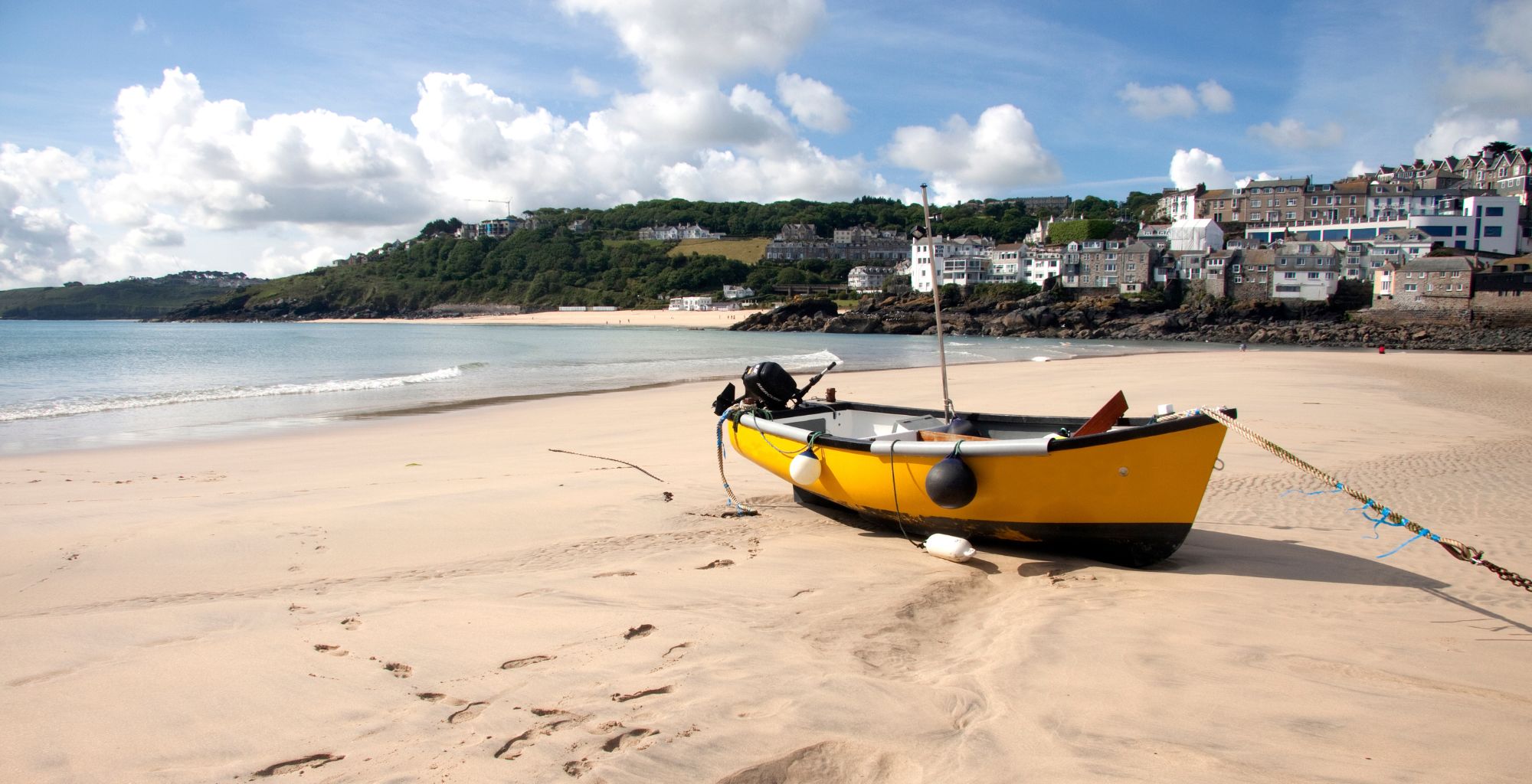
The best places to live in Cornwall
Looking for the perfect Cornish home and wondering where the best places to live in Cornwall are? Our local experts have shared their top recommendations.
Natural wonders, beautiful beaches, a 350-mile coastline, distinctive cuisine, a fascinating history, and a Celtic background that lends the county a culture unique to anywhere else in Britain – it’s little wonder that Cornwall is one of the most sought-after places in which to live.
An outstanding 10 towns in Cornwall were included in the best places to live in the UK this year. Here we share what we consider are some of the best places to live in Cornwall.
Mylor
Key facts:
- Amenities: the village boasts its general stores and grocery, post office and newsagent, butchers, hairdresser, fish shop, doctor’s surgery, and a dentist. The local hostelry is the Lemon Arms;
- Education: Mylor Community Primary School is rated Good by Ofsted, and the nearby secondary school Falmouth School is also rated Good. Truro School (roughly 10 miles away) is a leading, co-educational, independent school;
- Transport links: the principal access by road to Mylor is via the Cornish hub of Truro and its connections to the major trunk roads, the A39 and A30. Both Central London and Birmingham are approximately a 5½ to 6-hour drive;
- Trains: from the mainline railway station at Truro – just 10 miles or so away – there are direct services to London Paddington that take approximately 4½ to 5 hours.
Why live in Mylor?
Mylor sits on an attractive Cornish peninsula surrounded by crystal clear waters on three sides. Sailing is a draw, and Mylor Yacht Club is a hive of local activity.
It’s hardly surprising, therefore, that practically everyone in this quaintly bustling former fishing village owns a boat of one kind or another. If you’re not messing about on your boat, there are plenty of cafes, restaurants, and the Lemon Arms from which to watch the world go by.
The summer months draw their fair share of visitors – many of whom own second homes in the area – but there remains a strong sense of community throughout the year.
Falmouth
Key facts:
- Amenities: Falmouth offers an incredibly vibrant and bustling retail experience with several major UK chains and a wide selection of independent shops, stores, and boutiques – everything from fine art and antiques to meat and fresh vegetables. As you might expect from a town of its size, Falmouth also has several NHS doctors’ surgeries and dentists;
- Education: the town’s St Mary’s Catholic Primary School is rated Outstanding by Ofsted, and similar recognition is granted to Truro and Penwith College, some 11 miles north of Falmouth. The leading independent schools, Truro School (co-educational) and Truro High School (for girls), are also nearby;
- Transport links: Truro also provides the primary connection access to the motorway network of the M5 to the Midlands and the M4 to London. London is some 295 miles away – a drive of at least 5½ hours;
- Trains: the transport hub of Truro also boasts a mainline railway station, and from there, direct services to London Paddington take between around 4½ and 5 hours.
Why live in Falmouth?
There’s little doubt that this attractive town on the estuary of the River Fal is a popular place to live with its beautiful beaches and arty vibes.
You might be far from the bright lights and hubbub of London, but Falmouth has its own sense of vitality, contrast, and variety – with a wide range of shopping opportunities and great places in which to wind down, whether in one of its many bars, cafes, or restaurants.
The University of Falmouth ensures a regular through-put of lively youngsters who bring their energy and artsy bohemianism to proceedings.
Falmouth remains a busy, working port for the southwest of England, so it is a bustling and thoroughly lived-in place all year round.
St Mawes
Key facts:
- Amenities: these include both Co-op and Spar grocery stores, independent bakery, galleries and gift shops, boutiques, pharmacy, and dentist. St Mawes Surgery hosts the local NHS medical practice;
- Education: St Mawes Primary School is rated Good by Ofsted, as is the nearest state secondary school Falmouth School on the opposite banks of the Fal Estuary. Leading independent schools Truro School (co-educational) and Truro High School (for girls) are approximately 18 miles away;
- Transport links: situated on the southern tip of the Roseland Peninsula, the small town of St Mawes remains relatively remote but is connected to the local road network. London and Birmingham are around a six-hour drive away;
- Trains: Although relatively remote, St Mawes is only 18 miles or so from the mainline railway station at Truro and its direct services to London Paddington, which can make the journey in 4½ to 5 hours.
Why live in St Mawes?
One of the benefits of getting away from it all is the opportunity for a taste of luxury – and this is just what the peaceful quiet, and seclusion of life in St Mawes has to offer.
St Mawes is possibly the most exclusive destination in the southwest of England. The Idle Rocks Hotel and Hotel Tresanton (owned by Olga Polizzi) attract especially well-heeled guests to this part of the Roseland Peninsula.
The town is situated within an officially-designated Area of Outstanding Natural Beauty. Many of the buildings and surrounding countryside are in the ownership of the National Trust – ensuring the preservation of much that is so noteworthy of the place.
There are numerous pubs in the area, and if you are looking for a more affordable overnight stay, St Mawes Hotel, The White House, or the Rising Sun will offer welcoming accommodation.
Fowey
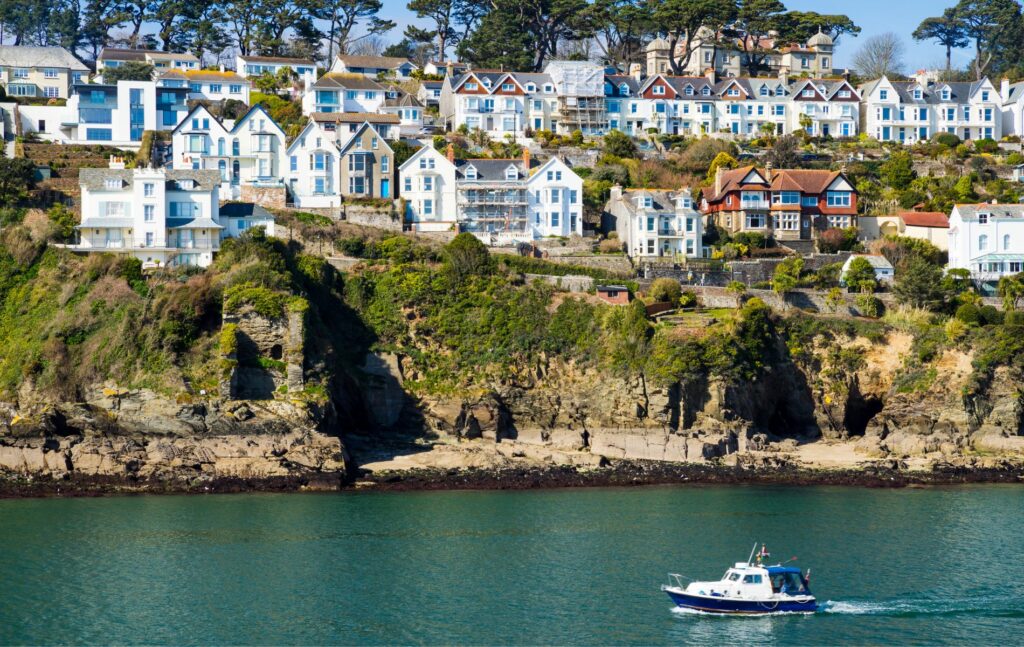
Key facts:
- Amenities: several grocery stores, shops specialising in local products and crafts, clothes boutiques, shoe shops and jewellers – all can be found in and around the quaint narrow streets of Fowey. NHS medical practices, pharmacies, dentists, and even Fowey & District Hospital are all nearby;
- Education: Fowey Primary School is rated Good by Ofsted, as is the state secondary Liskeard School and Community College, 20 miles to the northeast of Fowey. Plymouth College – 38 miles away – is one of the leading co-educational independent schools to be found in the southwest of England;
- Transport links: the town of Fowey may appear relatively remote, but the ease of access to Plymouth and Exeter makes good links with the UK’s road network. Central London is 271 miles away and a 5-hour drive, while Birmingham can be reached in around 4 hours by car;
- Trains: from the transport hub of Plymouth mainline rail services to London Paddington, make the journey in around 3½ to 4 hours.
Why live in Fowey?
Set in an Outstanding Natural Beauty Area, Fowey is considered one of the best-preserved harbour-side towns of southern England and has many historic Georgian – and even medieval – buildings.
An important port on the banks of the River Fowey, the town has existed since before the Norman invasion of England in 1066.
Today it is a bustling waterside town that has become increasingly popular with residents and visitors alike – boasting a unique blend of independent shops, cafes, and restaurants, interspersed with several well-known high street chains.
These characteristics make Fowey a truly up-and-coming place to live in southwest England.
Padstow
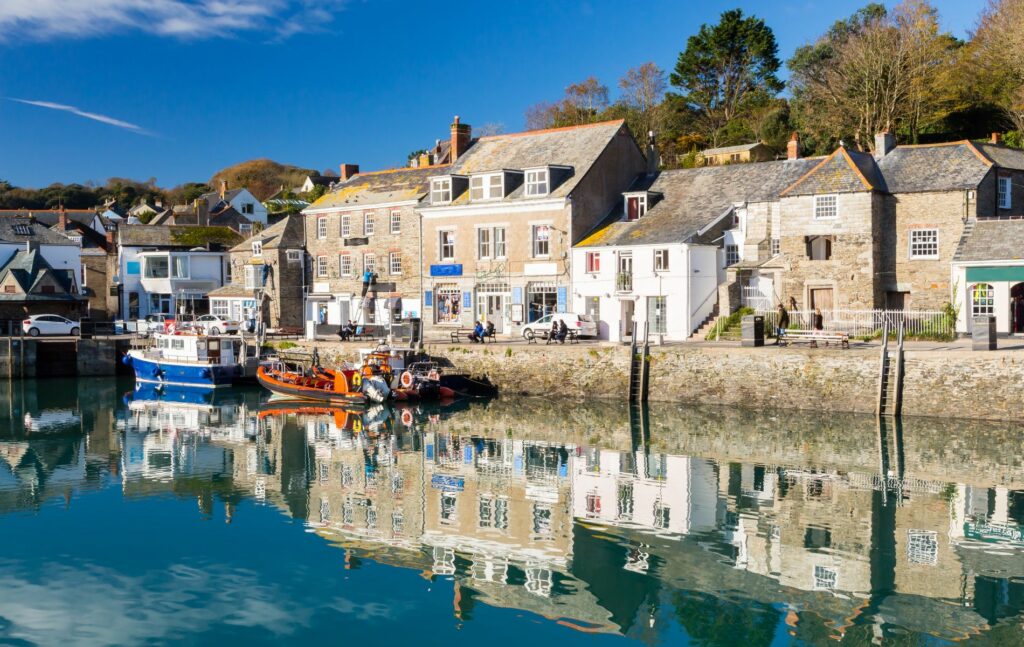
Key facts:
- Amenities: Padstow boasts a Tesco Superstore and also Londis and Spar supermarkets, but the wide selection of independent enterprises may include several surprises – not least the quality of the fishmongers (thanks to the patronage of iconic chef Rick Stein) and the number of artisanal breweries and wine merchants;
- Education: the primary St Merryn School in Padstow is rated Good by Ofsted, as is the state secondary Wadebridge School, some 9 miles to the southeast of Padstow. The respected co-educational independent St Joseph’s School is in Launceston – some 44 miles to the east of Padstow;
- Transport links: Padstow is well connected to the UK road network thanks to access to the major A30 trunk road via Bodmin – some 16 miles to the southeast of the town. The 281-mile road journey to London will take roughly 5 hours;
- Trains: Bodmin is also the place for mainline railway services to London Paddington – the fastest direct journey times taking around 4 hours.
Why live in Padstow?
Padstow has become the foodie capital of the southwest of England thanks to the presence of TV chef and personality Rick Stein.
In addition, the high-end restaurants and growth in the ownership of second and holiday homes have helped to fuel the town’s enviably robust property market.
In many ways, Padstow sums up all that is good about Cornwall – a vibrant, thriving, and bustling small town surrounded by stunning countryside and beautiful coastal walks. Indeed, a walk along the cliffs between Padstow and Watergate Bay, taking in Port Isaac and Rock, will reveal the Seven Bays for which this part of the north Cornwall coast is renowned.
If you love the great outdoors, Padstow has hiking, cycling trails, and water sports from innumerable beaches around the town.
St Ives
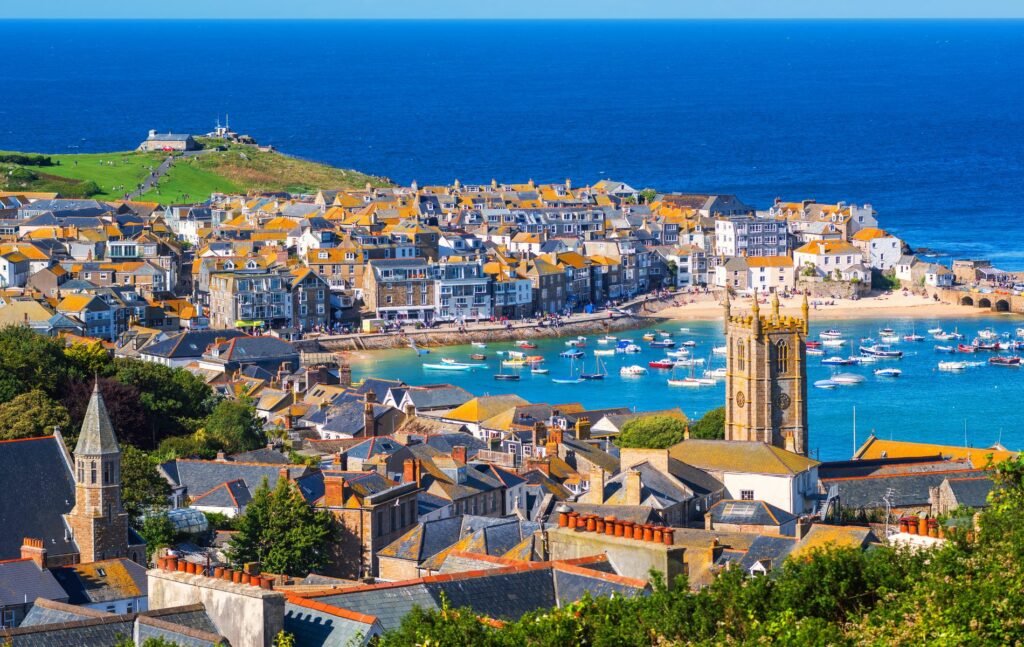
Key facts:
- Amenities: St Ives is a quirky seaside town that retains much of its distinctive character while attracting water sport enthusiasts and residents looking for a quieter, laid-back life. To service those otherwise competing demands, St Ives has a wide range of essential amenities – grocery stores, newsagents, pharmacies, and the like – together with an array of independent enterprises from beach wear to boutique fashion;
- Education: St Ives Junior School is rated Outstanding by Ofsted while the state secondary Academy St Ives School is rated Good. For leading independent schools, both the co-educational Truro School and Truro High School for Girls are 26 miles away;
- Transport links: St Ives’ position on the northwest coast of Cornwall puts it a long way from major UK centres – London, for example, is just over 300 miles away and is likely to take at least 5½ hours to drive. Newquay Airport – some 40 miles away – offers flights to London taking just over an hour (and other regional and European destinations);
- Trains: St Ives has its mainline railway station with services – involving one to three changes – to London Paddington that take approximately 5½ to 6 hours.
Why live in St Ives?
St Ives is probably one of the best-known Cornish destinations and is regularly voted to be one of the best places to live in Cornwall – not least because it has retained its picture book cottages, independent shops and stores, and its restaurants and hostelries.
The names conjure up all that might be the most quirky in Cornish folklore – with places such as Ayr Lane, Fore Street, and The Didgey.
St Ives is a great place for surfing, whether a novice or an experienced surfer. There is a vibe to a town that keeps many of its special treats hidden away in secret back streets away from the milling crowd.
As the sun goes down – or at any time of the day, to be honest – you’ll want to gaze out on the sea from your favourite spot in one of the town’s many cafes.
Truro

Key facts:
- Amenities: independent shops and high street names, hand-crafted goods to home-baked goodies, and add to that combination both indoor and outdoor markets – including a regular farmers’ market and you’ll see why Truro makes an excellent place to live or to visit if you’ve chosen your home in one of the nearby villages;
- Education: St Mary’s Church of England Primary School is rated Outstanding by Ofsted, while the state secondary Penair School is rated Good. The town boasts two of Cornwall’s leading independent schools – the co-educational Truro School and Truro High School for Girls;
- Transport links: Truro is a local transport hub offering links to the Midlands and London by car. Central London is some 283 miles from Truro – a drive of around 5 hours;
- Trains: Truro also boasts a mainline railway station with direct services to London Paddington, taking between 4½ and 5 hours.
Why live in Truro?
Truro is the county town – the administrative centre – of Cornwall and home to the county’s only cathedral.
In this regard, it offers a relaxed semi-urban lifestyle in a quiet part of the country with easy access to mid and west Cornwall.
To cap it all, Truro has excellent schools in both the independent and state sectors of education.
Life in Truro is relaxed yet refined with Victorian villas and late Regency townhouses around a revamped quayside where you can relax in any one of the numerous restaurants and cafes – try the Longstore or Sams in the City for some of the fine dining options.
A one-time winner of television’s Masterchef competition also runs the high-end, award-winning Sabzi Deli.
Its excellent transport links, good schools, relaxed lifestyle, and rural idylls, a short ride outside of town, make Truro an appealing place to set up home.
St Agnes
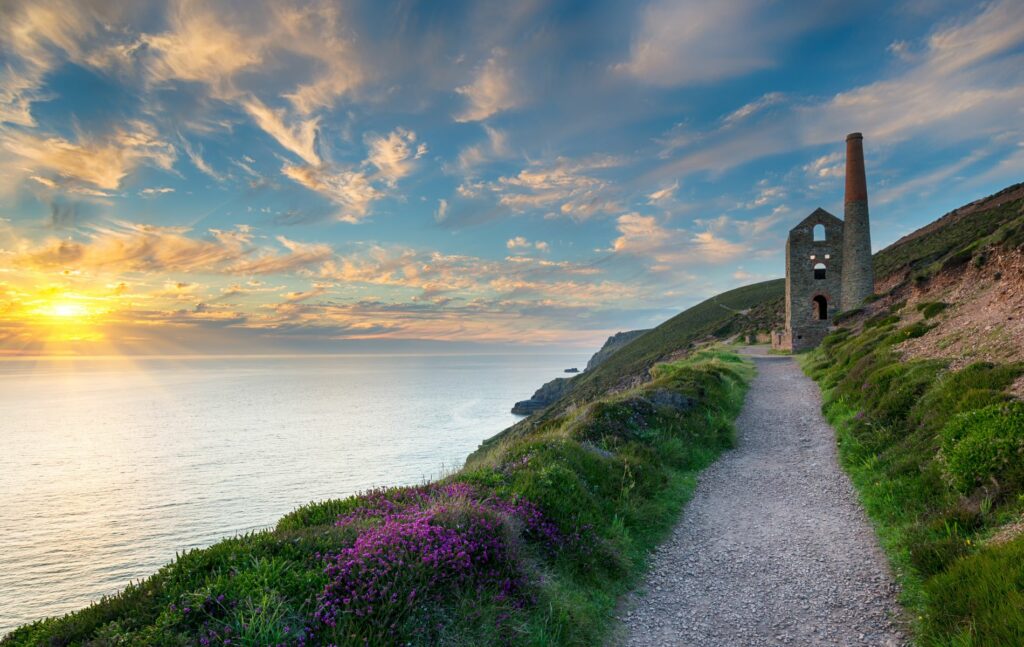
Key facts:
- Amenities: locals are likely to know it by its familiar name of “Aggie”, and it’s a small village that has everything you could want in local amenities – and that includes shops selling fruit and vegetables, groceries, newsagents, butchers, bakers, hairdressers, and countless cafes, restaurants, and pubs. The village has its medical practice, which also serves as a pharmacy;
- Education: the primary St Agnes Academy is rated Good by Ofsted, as is the state secondary and sixth form Camborne Science & International Academy, 13 miles southwest of St Agnes. Although they are on the opposite coast, the leading independents Truro School (co-educational) and Truro High School for Girls are just 10 miles or so to the southeast;
- Transport links: St Agnes is more or less central between Cambourne and Newquay. Access to the UK’s major road networks is via the A30. Central London is a little under 300 miles away – a drive of around 5 hours. From Cornwall Newquay Airport (22 miles away), direct flights to London take just an hour and 15 minutes – together with many other regional and European destinations;
- Trains: the nearest mainline railway station is Truro (some 10 miles away), and there are direct trains to London Paddington that take between 4½ and 5 hours.
Why live in St Agnes?
It’s the sheer independence of a village such as St Agnes that might strike the new arrival – and that’s not just in the independence of the local shops and stores but the local community itself.
It’s a community that prides itself on its friendliness.
St Agnes occupies a central location on the north Cornwall coast, making its transport links to the rest of the southwest – and the rest of the country – so much easier.
If you choose to live in – or near – St Agnes, you can be assured of beautiful beaches, a vibrant and thriving village life, and the warmest of welcomes from the already well-established community.
Portscatho
Key facts:
- Amenities: the village centre features a grocery and general store, a butcher, and an off-licence, together with the kind of gift shops and galleries that have become fairly common throughout the villages visited by tourists to Cornwall. The village pub is the Plume of Feathers. The Portscatho Surgery is also a dispensing pharmacy;
- Education: the state primary Academy Gerrans School is rated Good by Ofsted, as is the state secondary Penair School in Truro (15 miles away). Truro is also home to two of Cornwall’s leading independent schools – the co-educational Truro School and Truro High School for Girls;
- Transport links: Portscatho has good transport links to the national road network via Truro – some 15 miles north. Both Central London and Birmingham, respectively, are around 300 miles from Portscatho – a drive of approximately 6 hours;
- Trains: while there is no railway station in Portscatho, direct and relatively fast services to London Paddington operate from the station in Truro, and the journey will take between 4½ and 5 hours.
Why live in Portscatho?
Portscatho’s location gives it a welcome seclusion from the hustle and bustle of city life. Nevertheless, the village centre offers all the shops and amenities you might want daily.
Portscatho is an up-and-coming place to live in Cornwall – an attraction aided no doubt by television’s “Poldark effect” and the “Michelin effect” of so many fine dining restaurants in the neighbourhood.
Thanks to its east-facing aspect, Portscatho offers especially sheltered and safe waters for swimming – and its fine sandy beaches make it a favourite among families. It retains a small fishing fleet – a reminder of the 18th and 19th centuries when the village depended on fishing for pilchards to maintain its economy.
Porthleven
Key facts:
- Amenities: a plaque on the wall of the local general stores, the Porthleven Supermarket notes that it was built as a tribute to famous English composer Vaughn Williams. The village also boasts its own deli, a fish and chip shop, a barber, a beauty salon, innumerable gift shops, galleries, cafes, and restaurants – including the award-winning Quayside fishmongers;
- Education: the state primary Parc Eglos School in nearby Helston is rated Outstanding by Ofsted, and at secondary level, Helston Community College is rated Good. First-rate private education can be enjoyed at either the co-educational Truro School or Truro School for Girls – 20 miles to the northeast of Porthleven;
- Transport links: London is more than 300 miles away by road – a drive of around 6 hours. From Cornwall Airport Newquay (40 miles or an hour’s drive away), flights to London take an hour and 15 minutes (destinations throughout the UK and Europe are also available);
- Trains: the nearest mainline railway station is at St Erth –11 miles away – where direct services to London Paddington take just over 5 hours.
Why live in Porthleven?
Porthleven is the quintessential Cornish fishing village with a picture-postcard harbour and historic buildings.
A further claim to fame is that it is the most southern of the UK’s working ports – which operates behind some impressive sea defences that shelter it from the prevailing south-westerly storms.
It was once Cornwall’s leading fishing port for catches of mackerel and pilchard. Today, its still-quant quaysides are lined with the cafes and restaurants that host the town’s annual food festival.
Porthleven serves as an excellent base for anyone interested in walking at least part of the South West Coast Path that skirts the entire coastline of Cornwall.
Looe
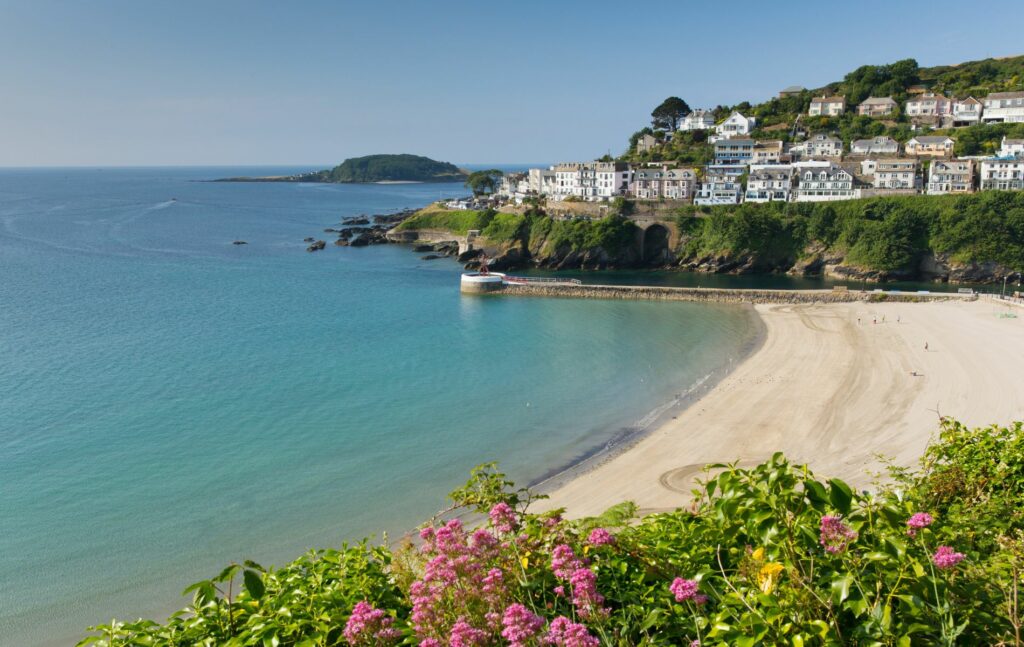
Key facts:
- Amenities: it might be a relatively small town, but Looe has its full share of nationally recognised supermarkets, plus a host of independent shops and stores, boutiques, and amenities. Unsurprisingly for a coastal resort with throngs of summer visitors, seafood features on the menus of its many cafes and restaurants;
- Education: Looe Primary Academy and the secondary level Looe Community Academy are both rated Good by Ofsted. In the private sector, Plymouth College (some 20 miles to the east) is one of the leading co-educational independent schools in Cornwall;
- Transport links: one of the appeals of living in Looe is its relative proximity to the City of Plymouth and, from there, Exeter and the national motorway to the Midlands and London;
- Trains: Great Western Railway operates mainline services from the station in Looe, with journey times to London Paddington taking a little over 5 hours.
Why live in Looe?
Looe is a town of two halves – East Looe and West Looe divided by the River Looe. The combination of river and seascapes means there are always great views in this up-and-coming part of East Cornwall.
Not only is it a stunning coastal town, but Looe is also strategically situated between the border with Devon and the City of Plymouth to the east and the historic market town of Liskeard to the west.
Plymouth, therefore, makes for a perfectly manageable 20-mile commute that takes around 40 minutes or so.
Penzance
Key facts:
- Amenities: as the principal market town serving the whole of the Lands End Peninsula, Penzance has a full range of shops and amenities – ranging from high street chains to determinedly independent enterprises, gift and souvenir shops and galleries. The recently developed Wharfside Shopping Centre has extended the approximately 400 or so retail outlets in Penzance;
- Education: several primary schools in and around the town are rated Good by Ofsted, as is the secondary level Humphry Davy School. The nearest top-rated independent schools are the co-educational Truro School and Truro School for Girls – both some 30 miles to the northeast;
- Transport links: the principal town on the Lands’ End Peninsula says it all – it is impossible to get much further to the southwest of England. London is around a 5½ hour drive. By air from Cornwall Newquay Airport (41 miles or about an hour’s drive away), London is just an hour and 15 minutes;
- Trains: there is a mainline railway station in Penzance, and Great Western Railway operates direct services to London Paddington that take around 5 to 5½ hours.
Why live in Penzance?
Penzance takes its name from the original “Pennsans”, which means Holy Headland in the Cornish language.
Penzance is probably more closely associated by English-speaking audiences, though, with the Gilbert and Sullivan light opera, the Pirates of Penzance.
Although the pirates are long gone, the town retains strong connections to all cultural exhibitions – from galleries to theatres and music venues.
The location – almost at Land’s End – makes Penzance remote, yet it is stylish, cultured, and well-heeled too.
Lying in the all-year shelter of Mounts Bay, palm trees and other semi-tropical plants thrive in this climate – while residents and visitors have stunning views across the Bay to St Michael’s Mount.
Port Isaac
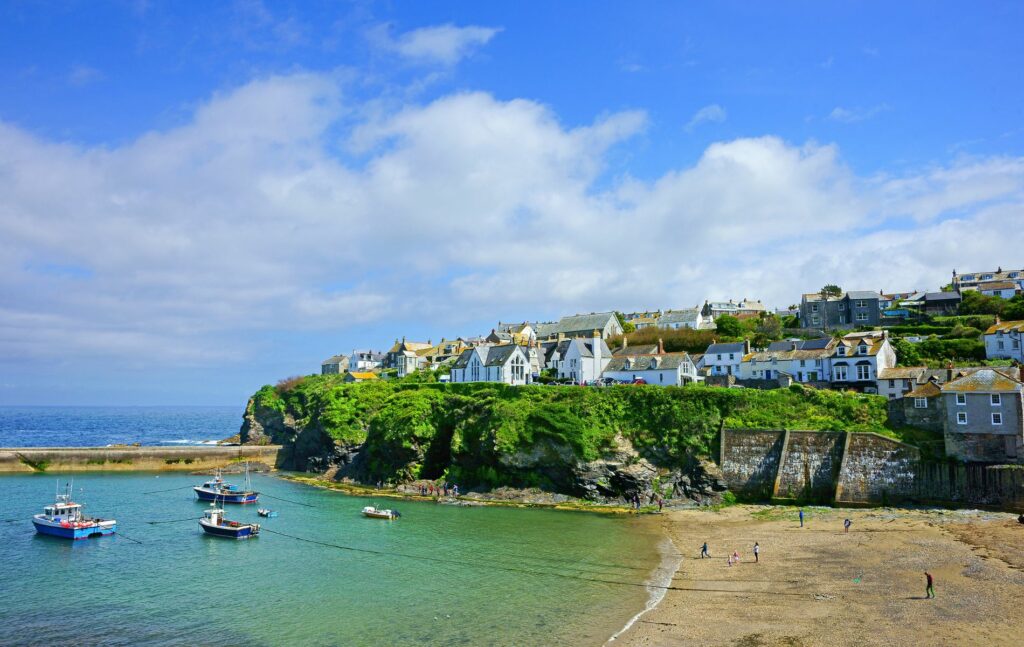
Key facts:
- Amenities: Port Isaac is a small fishing village forever associated in the minds of Britain’s television viewers with the fictional village of Portwenn and its irascible Doc Martin. You’ll not go short of any fish or seafood for tea, but most residents will make the short 8-mile journey to Wadebridge for most of their local shopping;
- Education: Wadebridge is also where you are likely to choose for its Wadebridge Primary Academy, rated Good by Ofsted – as is the state secondary level Wadebridge School. One of Cornwall’s leading co-educational independent schools (primary and secondary combined) is St Joseph’s School in Launceston – some 25 miles to the east of Port Isaac;
- Transport links: Launceston also serves as a transport hub for Port Isaac because it is here you can join the A30 trunk road to Exeter – and from there access the motorways to the Midlands and London. Central London is a drive of approximately 4¾ hours. Cornwall Newquay Airport is only 20 miles or so to the south and has flights to London that take just an hour and 15 minutes;
- Trains: the nearest mainline railway station is Bodmin Parkway, where the fastest direct services to London Paddington take around 4 hours.
Why live in Port Isaac?
The picturesque settings of this seaside town will be familiar to anyone who has watched the Doc Martin series on television – and the reality of the scenery on this Atlantic coastline of north Cornwall is as true as the fiction.
Port Isaac will make an ideal base for anyone drawn to life in this beautiful part of north Cornwall.
It is a tranquil fishing village – which has retained its picture-postcard appearance – yet is close to other main centres of activity such as Wadebridge and Bodmin.
Newlyn
Key facts:
- Amenities: Newlyn and Penzance’s twin towns – little more than a mile apart – offer a wide range of shops and amenities. Indeed, the recently developed Wharfside Shopping Centre in Penzance has taken the total number of retail outlets in these settlements to well over 400 – from familiar high-street supermarkets to locally-sourced independents. Newlyn has an edge on Penzance, perhaps, when it comes to the number of galleries and gift shops;
- Education: the primary Gulval School is rated Good by Ofsted, as is the state secondary Mounts Bay Academy. Excellent independent schools can be found at the co-educational Truro School and Truro School for Girls – around 30 miles away;
- Transport links: Central London (around 300 miles away) takes some 5½ hours to drive, and Birmingham takes about 6 hours. Cornwall Newquay Airport is just 44 miles (or about an hour’s drive) away, where flights to London take less than an hour and a half;
- Trains: from the mainline railway station in neighbouring Penzance, direct rail services to London Paddington can make that journey in around 5 to 5½ hours.
Why live in Newlyn?
If asked to describe Newlyn, residents might say that the town is characterised by two very different features – fishing and art.
Newlyn continues as a busy, thriving port and maintains the most extensive fishing fleet in the south of England – it is at the heart of one of Cornwall’s major industries, celebrated each year at the Newlyn Fish Festival.
Its artistic heritage is guaranteed by the continued presence of the Newlyn School Artists’ colony and the many galleries and art workshops around the town.
Along with its immediate neighbour Penzance, Newlyn offers a wealth of local amenities, shops, and stores – making it a decidedly up-and-coming place to live.
It has lots of amenities and beautiful harbour views.
Mullion
Key facts:
- Amenities: it might be the largest village on the Lizard Peninsula, but Mullion is still a village – and for all that packs a staggering selection of local shops. This includes several mini-markets, bakers and grocers, delicatessen, country food store and wine merchants, post office, clothes shop and jewellers, hair salon, pharmacy, and galleries and gift shops;
- Education: the primary Ruan Minor Church of England School – a little more than 4 miles away is rated Good by Ofsted, while the state secondary Mullion School is rated Outstanding. Cornwall’s top-rated independent schools, the co-educational Truro School and Truro School for Girls, are both just 24 miles away;
- Transport links: Mullion’s access to the national road network is via the Truro and from there for connections to the Midlands and London. London is more than 300 miles away, taking over 5½ hours to drive. Cornwall Newquay Airport is roughly 41 miles to the north (just over an hour’s drive away);
- Trains: the mainline railway station at Truro offers an alternative route to London Paddington – with direct train services taking approximately 4½ to 5 hours.
Why live in Mullion?
Mullion can be found towards the southern tip of the Lizard Peninsula, to the south of Helston and Porthleven – its location guarantees some of the most dramatic sea views in the southwest of England.
There are plentiful restaurants and hotels in the area – including the Mullion Cove Hotel, Polurrian on the Lizard, the Old Inn, and Mounts Bay Inn.
While Mullion remains a relatively more affordable place to buy a home than some other parts of Cornwall, it is rapidly up-and-coming.
The best places to live in Cornwall
As property finders, we often advise clients on the finest places to live in Cornwall based on their requirements.
Garrington would love to assist you in your search for a dream home in this beautiful area. Please do get in touch with one of our team to discuss your needs.
